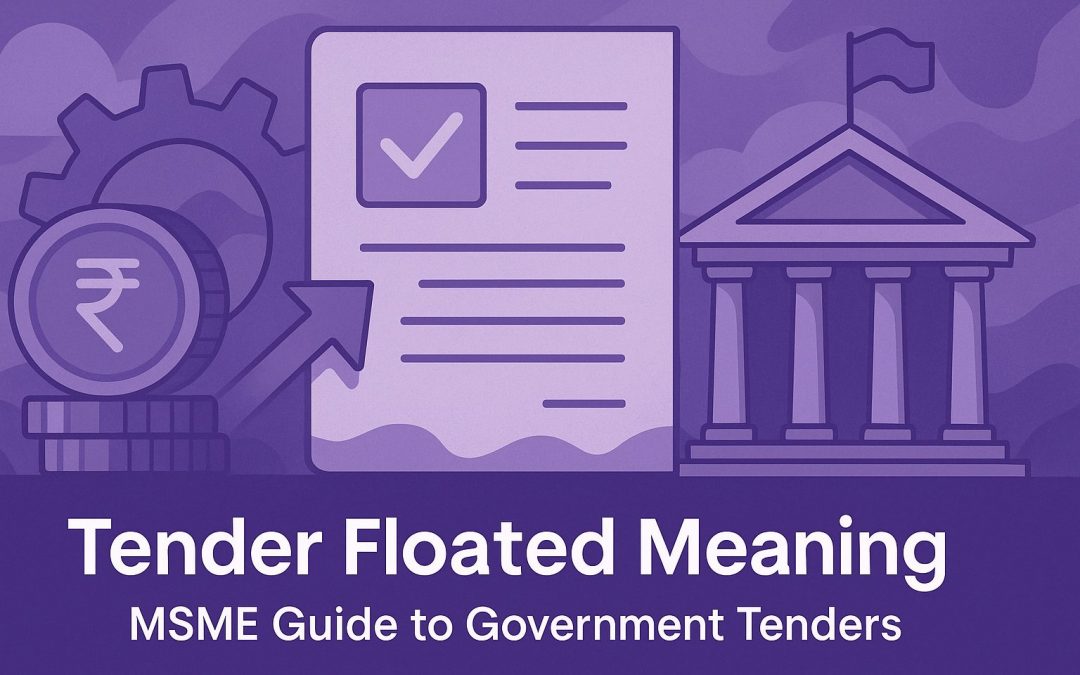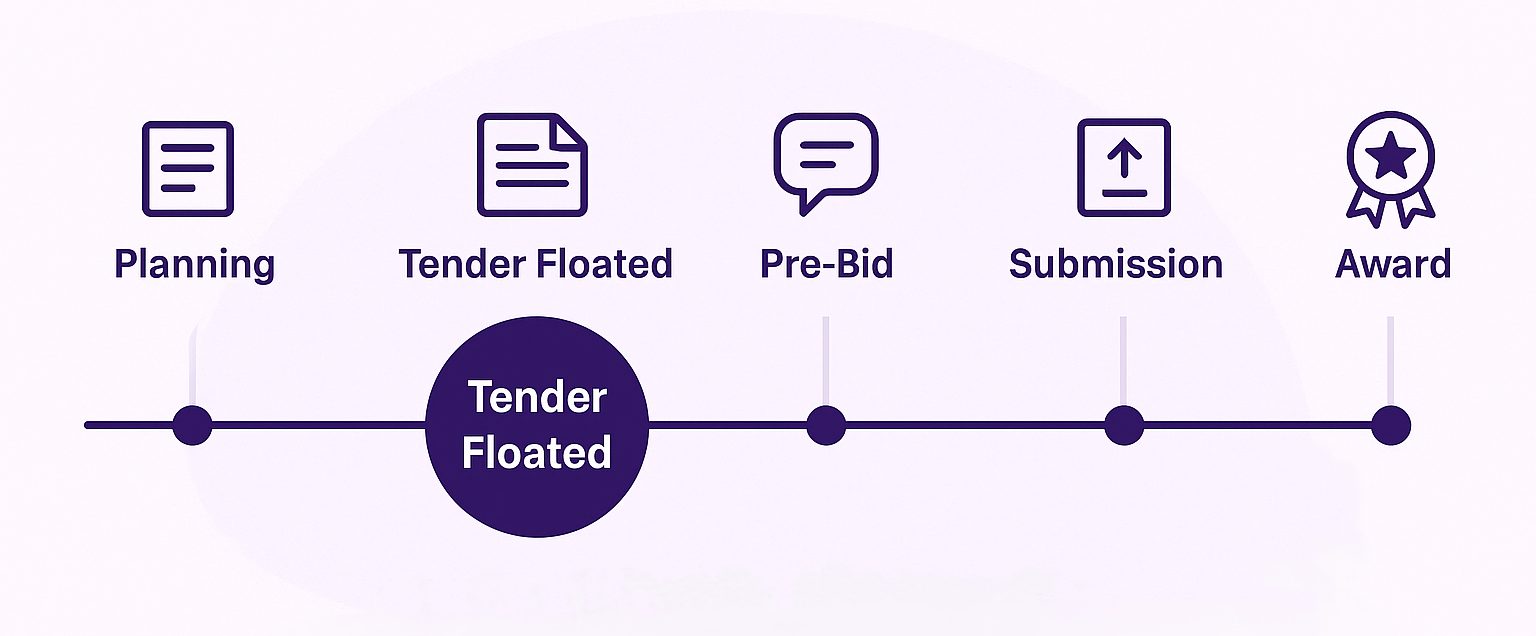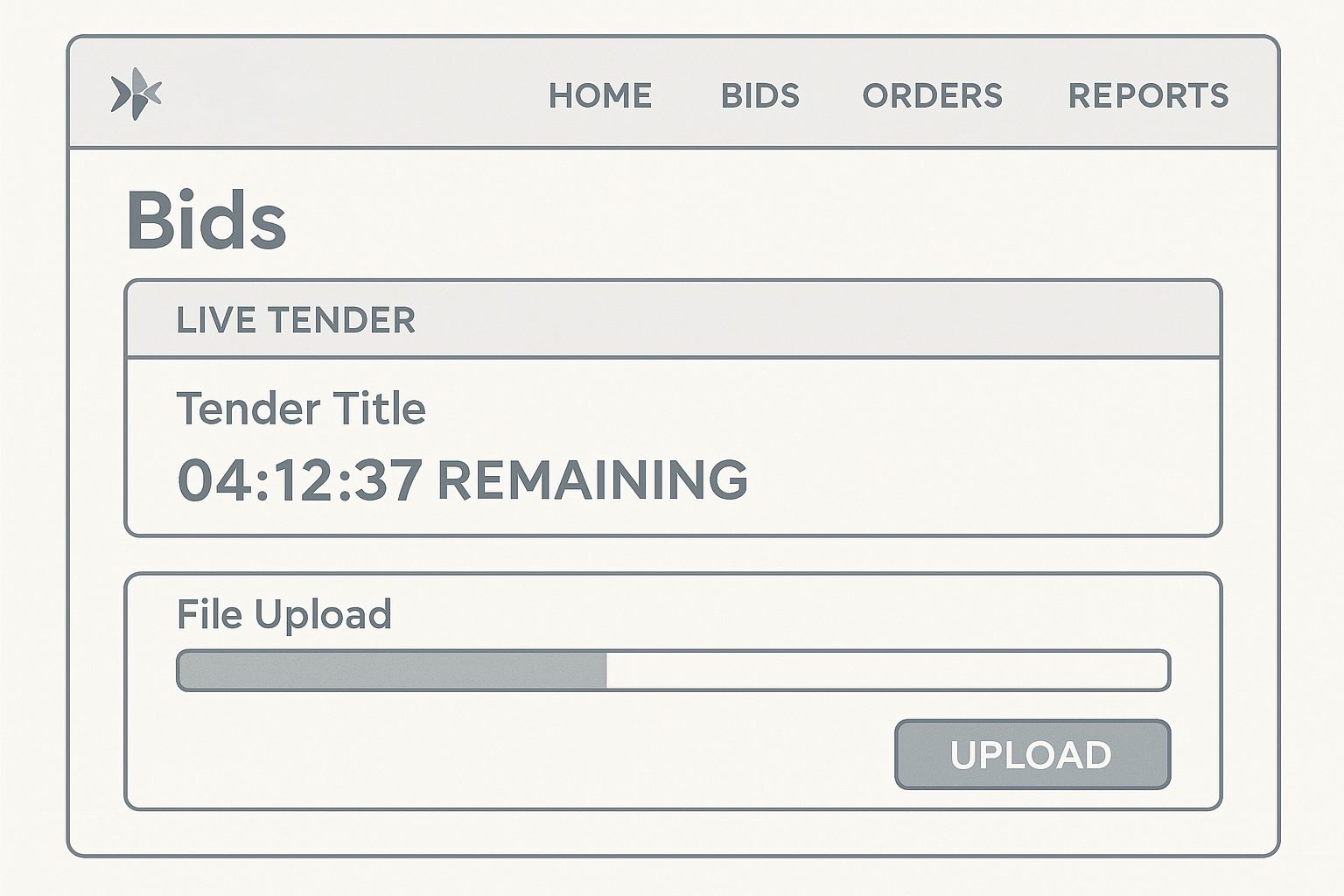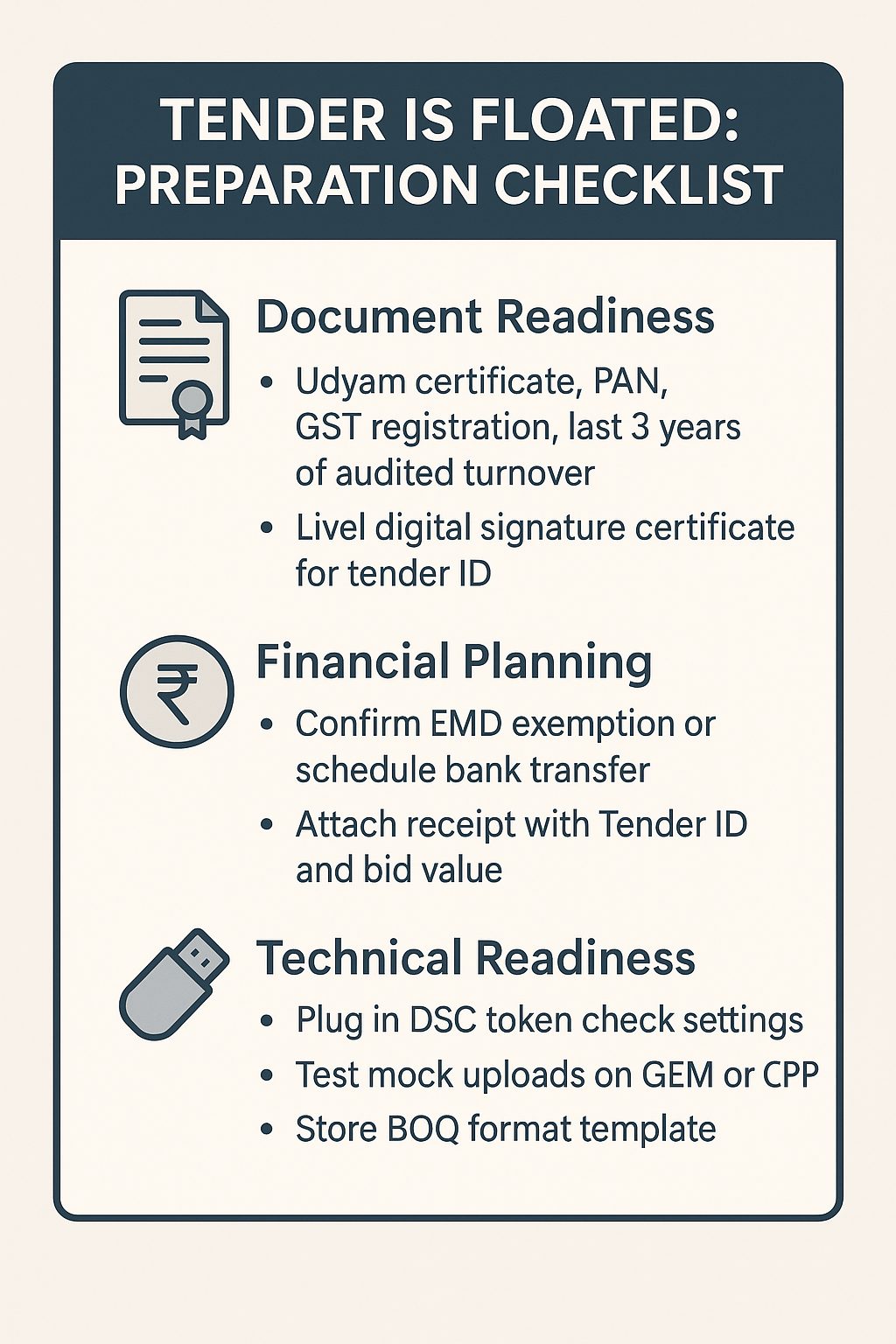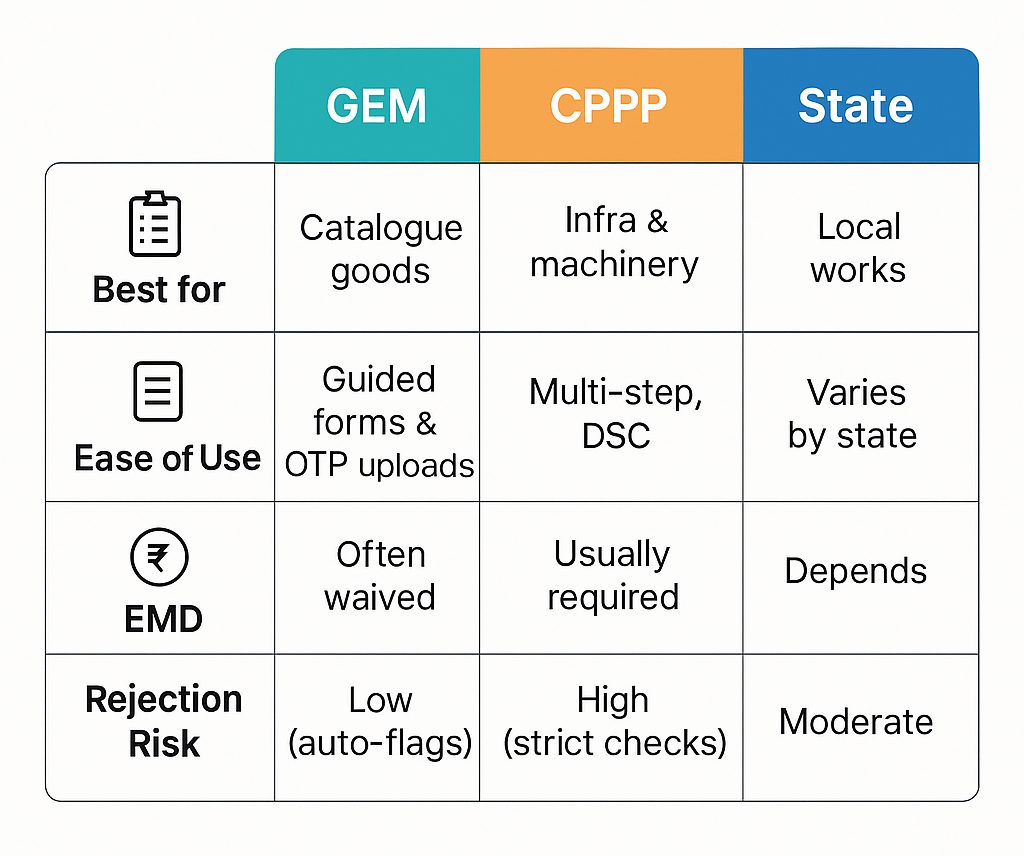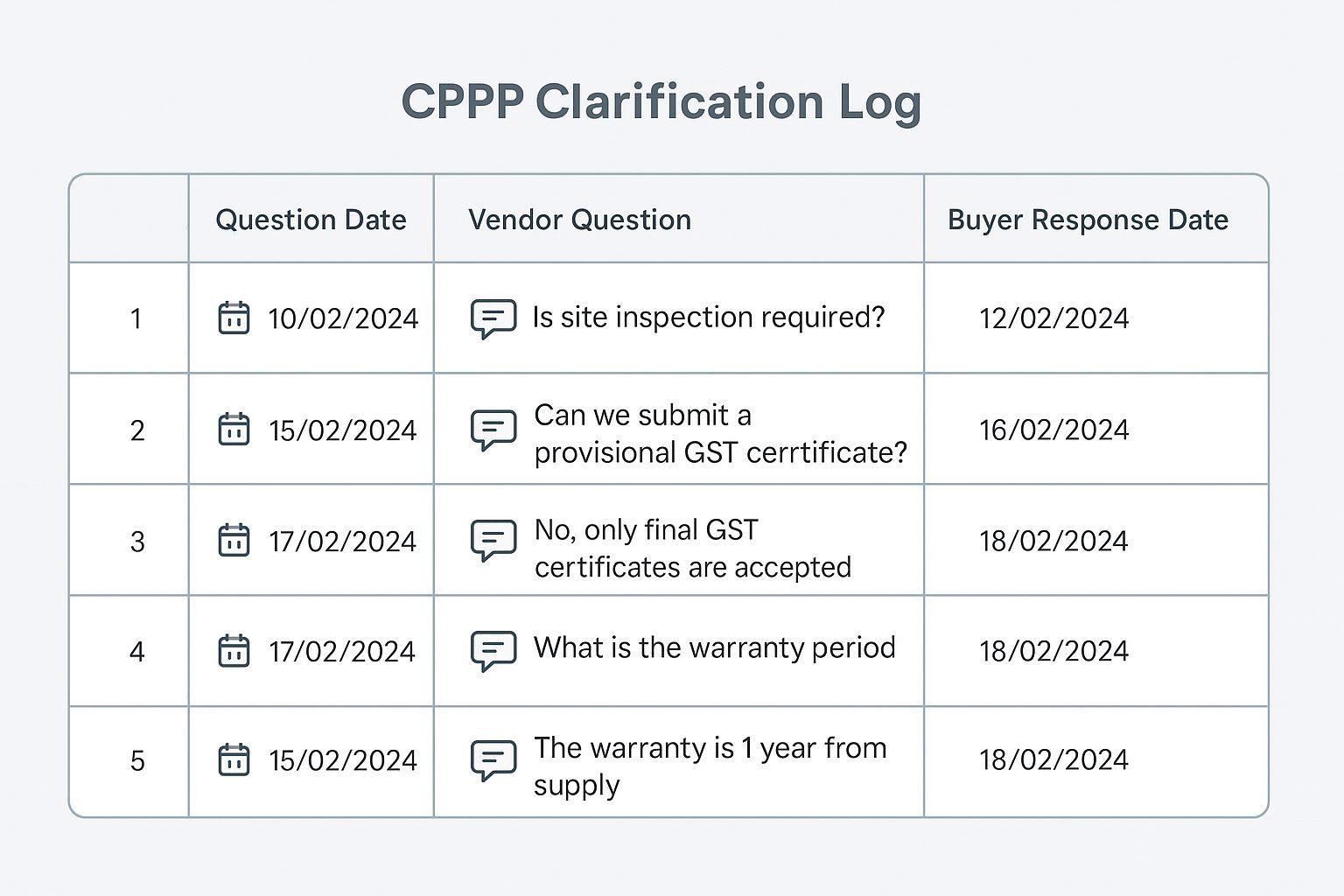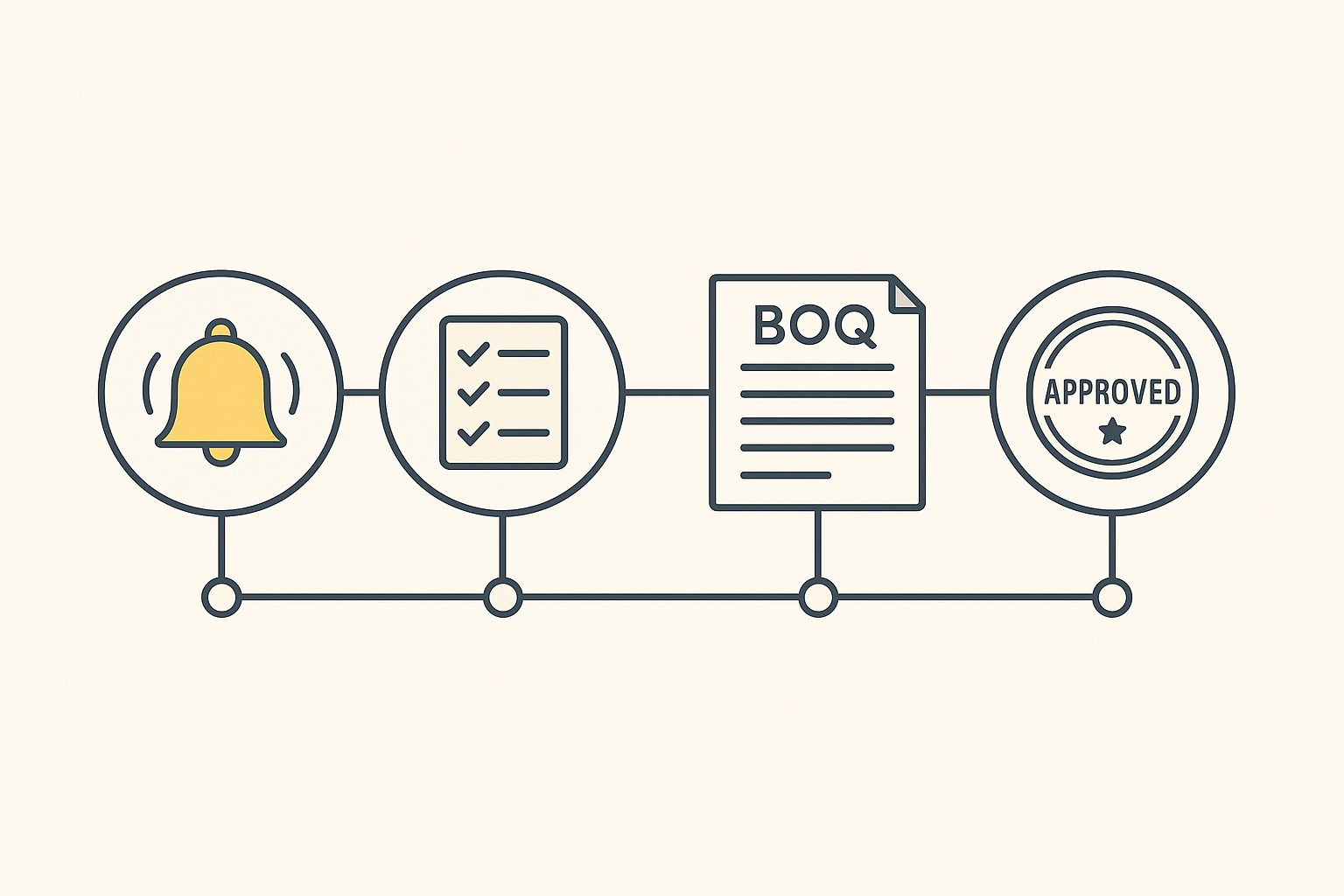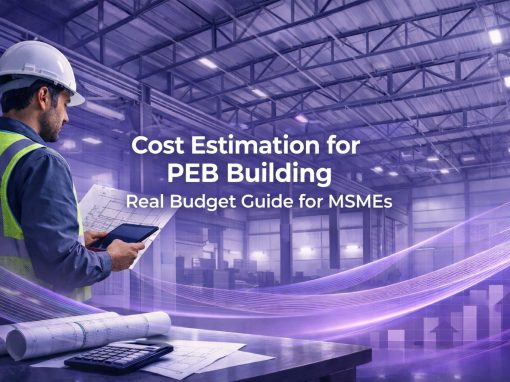Table of Contents
- Introduction
- Step by Step: What Follows Once a Tender Is Floated?
- Common Issues MSMEs Face After a Tender Is Floated
- Tender Readiness: How MSMEs Can Prepare Before Bidding
- Choosing the Right Portal: GEM, CPPP, or a State Site?
- Increasing Bid Success: Strategies After the Tender Is Floated
- Conclusion
Every week, central and state agencies float a tender for everything from office stationery to solar micro‑grids. Yet the phrase itself, “tender floated”, still confuses many first‑time bidders. Understanding the tender floated meaning is vital: it signals the clock has started on submission deadlines, document checks, and bid pricing. Miss the early prep window and the portal will move on without the vendor.
For MSMEs and startups, the urgency feels sharper. GEM, CPPP, and state tender portals each trigger different alerts, login rules, and digital signature certificate for tender prompts. This guide breaks down the procurement lifecycle after a tender is floated, pinpoints common rejection causes, and maps clear actions so small businesses can compete on level terms.
Step‑by‑Step: What Follows Once a Tender Is Floated?
The moment an agency places a notice online, the government tender process shifts from planning to competition. A fresh Tender ID appears, a countdown clock starts, and the BOQ format tender becomes public property. Vendors who open that alert early earn breathing space to gather certificates, refine prices, and chase signatures.
Five checkpoints arrive in quick succession. Publishing posts the invitation. A brief pre‑bid window lets suppliers raise doubts. Next, the clarification stage records every question—and the buyer’s official replies—inside the Indian eProcurement system. After that comes submission: price sheets, technical specs, and proof documents travel up through GEM upload fields or CPPP’s signed‑file utility. Finally, bids open on the portal’s dashboard while evaluators sift through eligibility and numbers.
Timelines look similar, yet each platform hides its own tripwires. GEM insists on an OTP for almost every attachment; a slow SMS gateway can steal minutes when the deadline looms. CPPP tender submission fails outright if the digital signature certificate for tender has expired—even by a day. Several state sites still rely on Java applets that modern browsers block unless whitelisted. A Jaipur lighting supplier missed a bid last quarter when the applet crashed during the EMD exemption for MSMEs step and the clock kept ticking.
Small discrepancies also end careers. A turnover certificate carrying the wrong Tender ID sank an otherwise perfect bid from a Mumbai engineering firm; the portal’s validator treated it as missing documentation. Hard‑coded deadlines show no mercy, so double‑check every reference number and keep a spare DSC token ready. Staying alert to these quirks is the only way to move from “tender floated” to “contract awarded.”
Common Issues MSMEs Face After a Tender Is Floated
A tender notice shows up, the clock starts, and small lapses suddenly matter. File names, browser pop‑ups, even a missing bank seal can wipe out weeks of preparation. The pitfalls below keep reappearing on GEM, CPPP, and most state portals. Treat them as a pre‑bid checklist; clearing each item sharply increases the odds of a compliant submission.
Portal Glitches and Login Errors
CPPP depends on a Java signing tool; every browser patch risks a fresh CPPP login error. Vendors who test their token driver a day early rarely panic on deadline morning. On GEM, one‑time passwords sometimes vanish in districts with spotty towers. Maintaining two verified mobile numbers and a spare USB token stops last‑minute scrambles.
Documentation Slip‑ups
Buyers keep asking for turnover statements, GST summaries, and experience letters even when a firm holds valid Udyam registration for tenders. A Surat textile exporter watched a bid fail after uploading last year’s turnover sheet instead of the current quarter. Check every date range, ensure the Tender ID appears on each page, and export to locked PDF before upload.
Money‑Trail Mistakes
The portal matches every figure in the earnest‑money receipt to the BOQ. A single digit out of place returns an instant rejection. Suppliers that rely on EMD exemption for MSMEs must attach the full exemption letter with stamps visible; a cropped scan reads as “illegible attachment.” Preview files after upload to confirm clarity.
BOQ Booby Traps
The BOQ format tender spreadsheet houses hidden checksum formulas. Editing those cells—or renaming the file—breaks validation. Always download a fresh sheet, enter values only in the yellow cells, and save under the default name. A Nagpur electrical startup lost a contract after adding its company initials to the file title; the portal blocked the upload.
Master these hurdles and the phrase tender floated meaning shifts from confusion to opportunity, turning each float into a realistic shot at a government order.
Tender Readiness: How MSMEs Can Prepare Before Bidding
Preparing before the tender floated meaning alert lands in an inbox is the surest way to stay calm under a ticking clock. Start with an iron‑clad document kit: Udyam certificate, PAN, GST registration, last three years of audited turnover, and a live digital signature certificate for tender. Keep every file in PDF, under 2 MB, and name each one with the firm’s legal title followed by the Tender ID.
Finance comes next. Confirm whether the buyer accepts EMD exemption for MSMEs; if not, budget the earnest money and queue the bank transfer at least 24 hours ahead. Attach the receipt that carries the exact Tender ID and bid value. Firms that ignore this match often face instant rejection for “EMD mismatch.” Hold a reserve margin for price revisions, since last‑minute freight hikes can erase slim profit cushion.
Technical readiness closes the loop. Plug the DSC token into every workstation that may submit the bid and update the driver. Test a full mock upload on GEM or CPPP during low‑traffic hours to verify the browser, pop‑up settings, and net speed. Store a fresh BOQ format tender template on a shared drive and lock yellow input cells against accidental edits. A Vijayawada auto‑parts supplier credits this drill with shaving 15 minutes off its actual submission time.
Completing these steps before the float tender meaning becomes reality turns a frantic deadline into a scheduled task, freeing the team to polish pricing and value‑add clauses that lift the final score.
Choosing the Right Portal: GEM, CPPP, or a State Site?
A public buyer may float the same tender on more than one portal, yet each platform caters to a different slice of Indian procurement. Picking the wrong venue drains registration hours and traps the bid behind unfamiliar rules. Examine category fit, paperwork depth, and tech comfort before locking in a choice.
GeM
GEM suits catalogue‑friendly goods and small works. A furniture maker in Coimbatore shaved five days off its cycle time after moving from a state portal to GEM; the portal’s guided forms auto‑flagged missing GST digits and pushed the offer straight to evaluation. Sellers also like the built‑in waiver on earnest money for many MSME items, plus the one‑click buyer‑seller chat that speeds clarifications.
CPPP
CPPP hosts heavy civil jobs and multi‑crore equipment packages. The reward is scale, yet the compliance wall stands taller. Every upload must carry a valid digital signature certificate, and the system rejects annexures if the Tender ID is absent or typed wrong once. A Pune HVAC contractor learned that lesson after a single certificate missed the ID and the bid turned red at midnight.
State Portals
State portals vary wildly. Kerala’s eProc site runs smoothly on modern browsers, while Rajasthan’s still calls a Java applet that antivirus tools see as a threat. Local works up to ₹50 lakh often appear only here, and turnover bars can be lower. Before enrolling, a vendor should run a test upload, confirm payment gateways, and check whether Udyam registration triggers any preference.
Choosing wisely sets the tone for the entire bid. The right portal aligns with the firm’s catalogue, cash flow, and technical muscle, leaving teams free to refine price and delivery rather than fight software hurdles.
Increasing Bid Success: Strategies After the Tender Is Floated
A tender notice looks harmless on screen, yet it launches a tight race. The bidders who move first usually finish on top.
Get into the room, even if it’s virtual
Pre‑bid meetings expose hidden clauses—extra testing, surprise freight terms, odd delivery slots. A Chennai precision‑tools firm once asked whether the buyer would accept weekend inspections; the reply turned into an addendum that shook off slower rivals. Post questions through the portal’s clarification tab so every answer lands in writing.
Price with layers, not guesses
Break the BOQ format tender into raw materials, labour, freight, packaging, and after‑sales service. Transparent lines defend profit when steel or diesel spikes before dispatch. Auditors dislike single lump‑sum entries; they accept well‑tagged costs tied to documentable rates and HSN codes.
Audit every attachment one last time
The digital signature certificate for tender must outlive the bid‑opening date. File names should hold only the legal entity and Tender ID—nothing more. Some state portals flag extra characters as malware. During off‑peak hours, run a dummy upload to spot garbled text or wrong order in annexures, then delete the test.
Stay on the radar after pressing “submit.”
Corrigenda drop without warning; a prompt reply tells evaluators the vendor stays engaged. A Hyderabad solar startup secured a deal by answering a clarification in two hours, while competitors missed the 24‑hour window and fell out.
Every move above turns the plain phrase tender floated meaning into a stepping stone rather than a hurdle. When steps are deliberate, compliant, and timely, the award column starts welcoming new MSME names.
Conclusion
The moment a buyer floats a tender, the calm of routine work gives way to a sprint. First, read every line of the notice the day it lands; mark the calendar, set phone alerts, and share the link with the team. Check that each certificate—Udyam, GST, turnover—carries the right Tender ID and the current date. One digit out of place can still sink a bid.
Next, rehearse the upload. Plug in the signing token, run a mock file transfer, and watch for stalled progress bars. Fix any browser blocks or OTP delays while the deadline sits days away rather than minutes.
Finally, choose battles wisely. GEM rewards speed and catalogue items, CPPP favours high‑value engineering, while state sites suit local work for firms that know their way around older interfaces. Match the portal to the product, layer costs clearly in the BOQ, and answer clarifications on the same day they appear. Follow these habits and the phrase tender floated meaning shifts from mystery to routine advantage.
Looking for the right government tenders for your business?
Tata nexarc helps MSMEs, manufacturers, and service providers find relevant government tenders across India. Discover tenders by location, category, or department, track deadlines, and get notified on time — with complete support to help you apply confidently.
FAQs
What is a Performance Security Deposit (PSD) and when is it refundable?
Can a bidder negotiate prices after winning through an e reverse auction?
How does the government handle delayed payments to MSMEs and what legal recourse exists?
What penalties apply if supply is late under a government contract?
How is vendor performance rating calculated on GEM and how can it be improved?
What is a No Claim Certificate and when must it be submitted?
How frequently should a DSC token be renewed to avoid mid contract lockouts?
Are GST e invoices mandatory for all government contract deliveries?
What steps must an MSME follow to seek an EMD refund after tender cancellation?
Which grievance redressal forum handles disputes arising from state e procurement contracts?
A product manager with a writer's heart, Anirban leverages his 6 years of experience to empower MSMEs in the business and technology sectors. His time at Tata nexarc honed his skills in crafting informative content tailored to MSME needs. Whether wielding words for business or developing innovative products for both Tata Nexarc and MSMEs, his passion for clear communication and a deep understanding of their challenges shine through.
